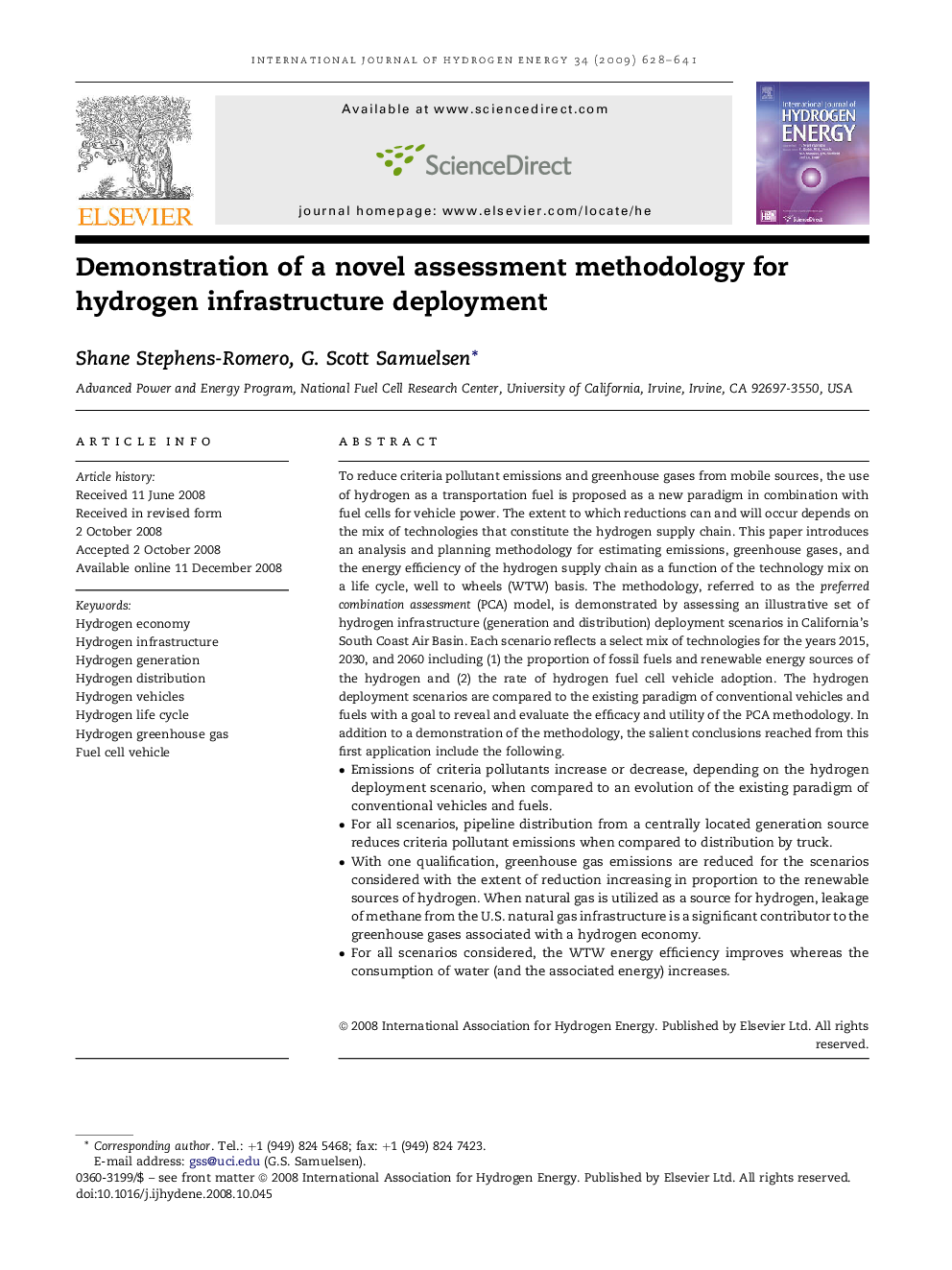| Article ID | Journal | Published Year | Pages | File Type |
|---|---|---|---|---|
| 1283443 | International Journal of Hydrogen Energy | 2009 | 14 Pages |
To reduce criteria pollutant emissions and greenhouse gases from mobile sources, the use of hydrogen as a transportation fuel is proposed as a new paradigm in combination with fuel cells for vehicle power. The extent to which reductions can and will occur depends on the mix of technologies that constitute the hydrogen supply chain. This paper introduces an analysis and planning methodology for estimating emissions, greenhouse gases, and the energy efficiency of the hydrogen supply chain as a function of the technology mix on a life cycle, well to wheels (WTW) basis. The methodology, referred to as the preferred combination assessment (PCA) model, is demonstrated by assessing an illustrative set of hydrogen infrastructure (generation and distribution) deployment scenarios in California's South Coast Air Basin. Each scenario reflects a select mix of technologies for the years 2015, 2030, and 2060 including (1) the proportion of fossil fuels and renewable energy sources of the hydrogen and (2) the rate of hydrogen fuel cell vehicle adoption. The hydrogen deployment scenarios are compared to the existing paradigm of conventional vehicles and fuels with a goal to reveal and evaluate the efficacy and utility of the PCA methodology. In addition to a demonstration of the methodology, the salient conclusions reached from this first application include the following.•Emissions of criteria pollutants increase or decrease, depending on the hydrogen deployment scenario, when compared to an evolution of the existing paradigm of conventional vehicles and fuels.•For all scenarios, pipeline distribution from a centrally located generation source reduces criteria pollutant emissions when compared to distribution by truck.•With one qualification, greenhouse gas emissions are reduced for the scenarios considered with the extent of reduction increasing in proportion to the renewable sources of hydrogen. When natural gas is utilized as a source for hydrogen, leakage of methane from the U.S. natural gas infrastructure is a significant contributor to the greenhouse gases associated with a hydrogen economy.•For all scenarios considered, the WTW energy efficiency improves whereas the consumption of water (and the associated energy) increases.
